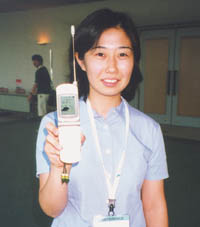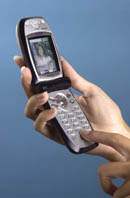IPv6 and the digital divide
| |

In Japan, the first country to launch an IMT–2000 system, precursor systems providing mobile Internet access
achieved more than 40 million users in just two years of deployment
(ITU 000073)
|
|
There are great expectations that IPv6 can help bridge the digital divide that currently exists between the developed
world (in particular the United States, where IPv4 address space was in good supply in the early years of the Internet) and emerging Internet nations in Eastern Europe, Africa, Latin America and Asia, provided that IPv6 address allocation takes place in accordance with internationally agreed principles that ensure equitable allocation. ITU, and in particular its Telecommunication Standardization Sector, could play a role in the development of such principles. With those caveats, IPv6 promises a level playing field for Internet Protocol application development and deployment where IP addresses are readily available the world over, not a luxury for a privileged minority.
Bridging this divide is now a global objective. But the uneven diffusion of technology is nothing new. There have
long been huge differences among countries. The irony of the Internet phenomenon is that while in theory the global network of networks is open to all, the vast majority of the world’s population remains cut off from its economic and
educational benefits. Only 8 per cent of the world’s population has access to the Internet, compared to 20 per cent to the phone system.
|

(ITU 000062)
|
|
Affordable technologies more appropriate to developing economies could include solar-rechargeable batteries that would allow mobile phones to be used even in areas lacking electricity lines. The Internet could achieve a far better penetration through wireless access technologies, due to their dual benefit of being faster to deploy in any area (wide-scale cabling is not required) and of “giving wings” to the Internet with their mobility.
In Japan, the first country to launch an IMT–2000 system, precursor systems providing mobile Internet access (for
example, i-mode, J-SkyWeb and EZWeb) achieved more than 40 million users in just two years of deployment. Now, adding IPv6 to it would give the developing world immediate access not only to the Internet but also, to many
next generation applications currently under development. Failure to provide digital technology to countries in the developing world essentially means denying them an opportunity to participate in the new economy of the 21st century.
|